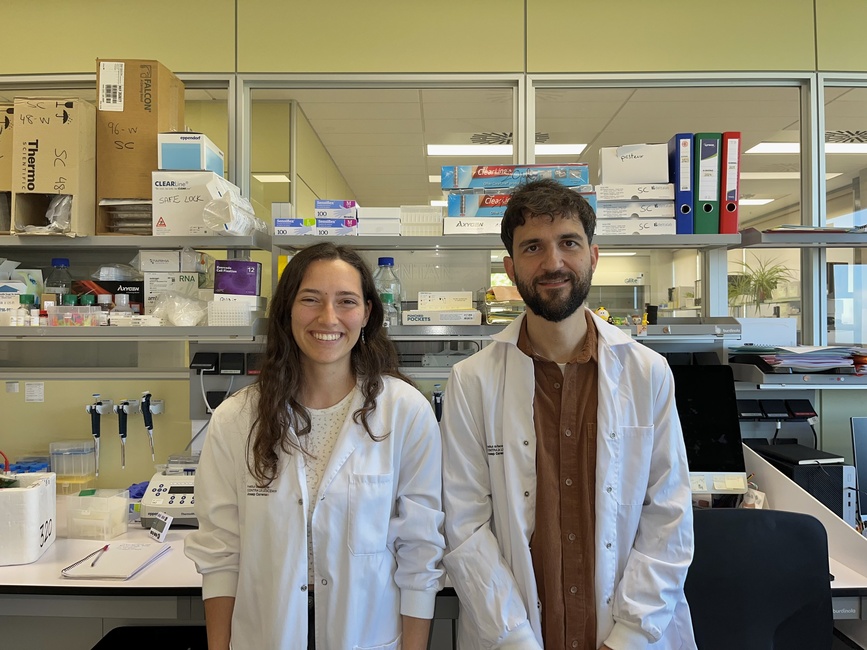A common alteration in acute myeloid leukaemia helps cancer cells survive and holds the potential for new therapies
A new study from the Transcriptional Dynamics in Leukaemia group at the Josep Carreras Leukaemia Research Institute reveals how alterations in the CEBPA gene in acute myeloid leukaemia cells confer higher resistance to inflammation, which helps cancer cells survive. The study, led by Dr. Sergi Cuartero and Maria Cadefau, also reveals that the same alterations leave the cells more vulnerable to drugs that interfere with normal protein folding, a form of intracellular stress, which could be therapeutically exploited.

Acute myeloid leukaemia (AML) affects roughly 4 in 100,000 people in Spain, with around 2,000 new cases every year, according to REDECAN. Most cases appear in elderly people, over 60 years old, and has one of the poorest survival rates among all blood cancers (20%). Mutations in the CEBPA gene, a key regulator of blood cell production, are commonly found among AML patients and many result in the production of a shorter version of the CEBPA protein.
A research team spearheaded by Dr. Sergi Cuartero and Maria Cadefau found, after a comprehensive analysis of different cell types with mutations at CEBPA, that cells producing the shorter version of CEBPA had lower sensitivity to inflammatory signals, highly present in the leukemic microenvironment, compared with cells with the full-length protein.
The study, published in the international journal Nature Communications, shows that while healthy cells exposed to inflammatory signals use to die in the long term, cells expressing the mutant version of CEBPA remain unaffected, allowing them to survive in the adverse conditions of an inflamed bone marrow. After this discovery, the researchers went on to investigate the mechanism underlying this effect and found an unexpected vulnerability that could be exploited therapeutically.
Indeed, the team found another protein, called ATF4, key to properly manage intracellular stress caused by protein misfolding, was also affected in cells producing the mutant CEBPA. Would altered cells be especially sensitive to drugs that generate stress by blocking normal protein folding? The answer is yes, they are: in a series of in vitro experiments with tunicamycin, researchers demonstrated that cells producing the shorter version of CBPA died in greater numbers, five-fold, compared to healthy cells used as control.
Taken together, the reported results show that deepening the knowledge on the causes of cancer can make it possible to discover potential therapeutic solutions as well. In AML, it seems that the very same mutation events leading to malignant cell growth in CEBPA-mutant patients, could be also its Achille’s heel, opening a new avenue to explore new therapeutic approaches in the future.
This research has been partly founded by the Spanish and Catalan governments, La Caixa Foundation, the Josep Carreras Leukaemia Foundation and the European Union’s Horizon Europe program. No generative AI tools have been used in the production of this text.
Reference article:
Cadefau-Fabregat, M., Martínez-Cebrián, G., Lorenzi, L. et al. “Mutant CEBPA promotes tolerance to inflammatory stress through deficient AP-1 activation”. Nat Commun 16, 3492 (2025). https://doi.org/10.1038/s41467-025-58712-7